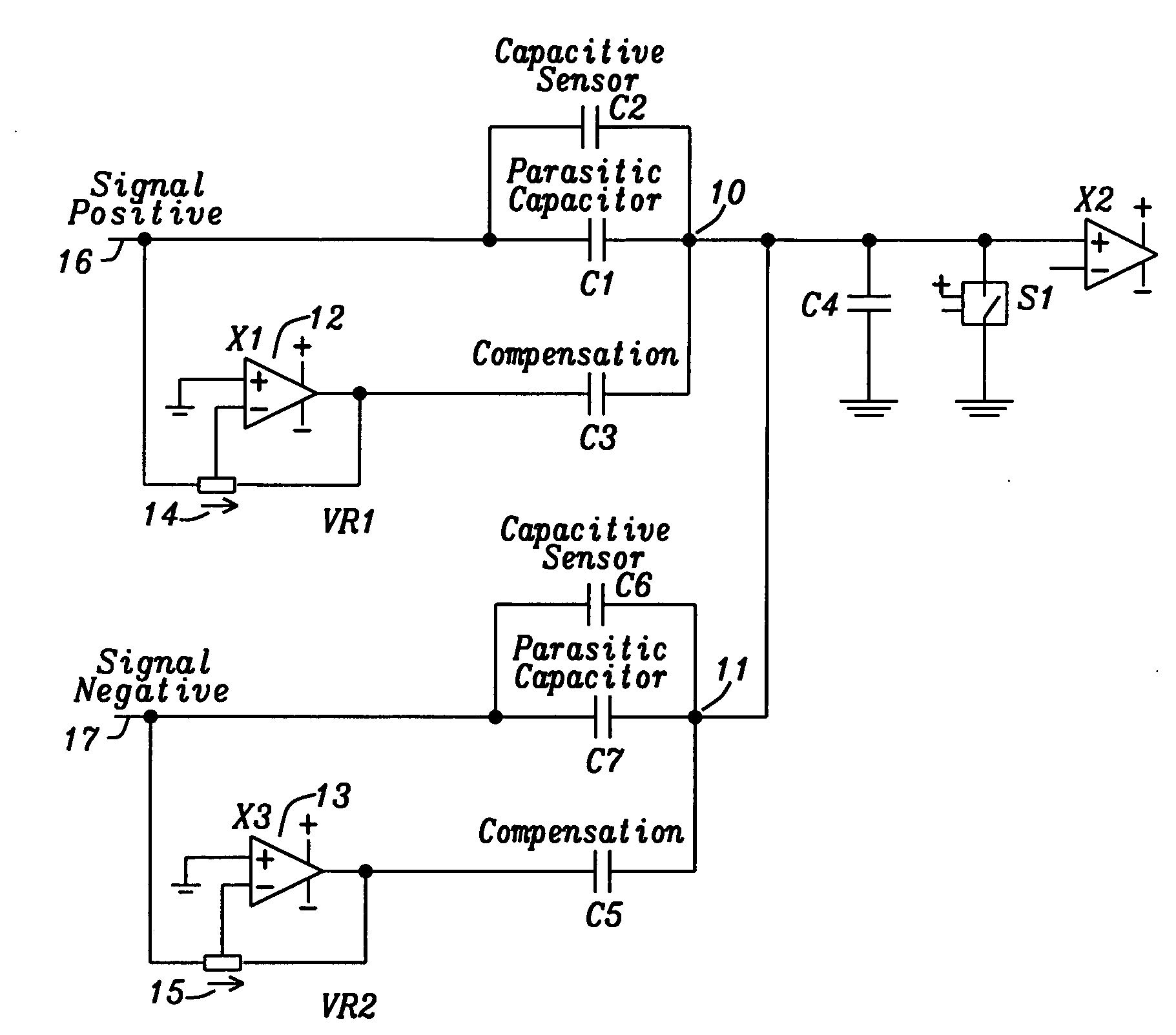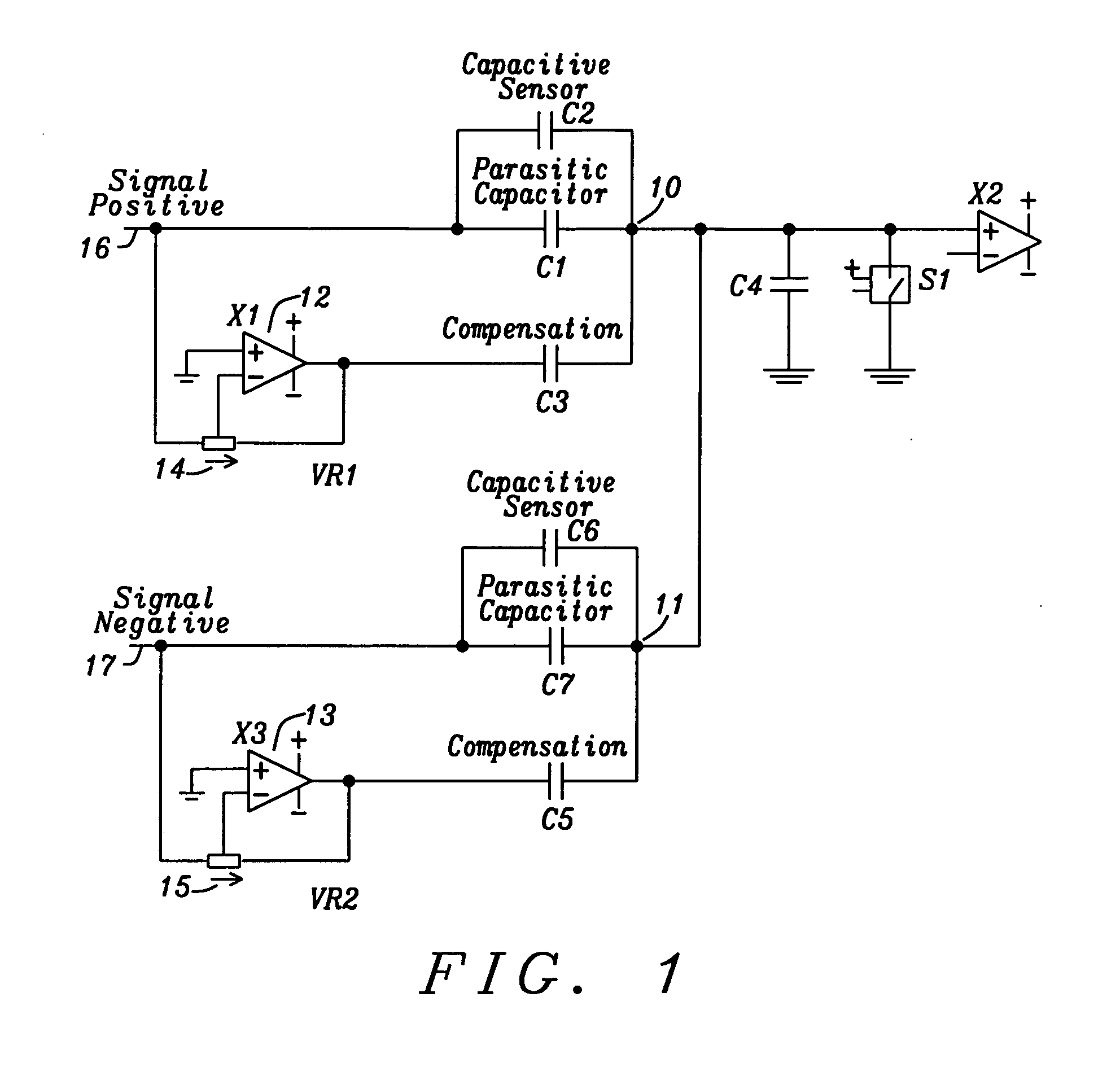Compensation of parasitic capacitances of capacitive sensors
a capacitance compensation and capacitance technology, applied in the field of capacitance compensation of parasitic capacitances of capacitive sensors, to achieve the effect of strong output signals
- Summary
- Abstract
- Description
- Claims
- Application Information
AI Technical Summary
Benefits of technology
Problems solved by technology
Method used
Image
Examples
first embodiment
[0025]FIG. 1 illustrates a block diagram showing the principal building blocks of a circuit invented compensating parasitic capacitances. A pair of capacitive sensors C2 and C6 is used to determine a position of an object, carrying one or more sensor plates that are to be moved to a target position. It should be noted that one or two or more than two capacitive sensors could be used with the present invention. Each sensor with a odd number (first, third, fifth, . . . sensor) has its first terminal connected to a positive input signal, each sensor with an even number (second, fourth, sixth . . . sensor) has its first terminal connected to a negative input signal, and all second terminals are connected to a common signal output.
[0026]Two sensor capacitors have been deployed in the preferred embodiment to enable a differential measurement of the position of the moving object. Each sensor capacitor has at least one plate on the moving object and one plate having a fixed position. Parasi...
second embodiment
[0033]FIG. 2 illustrates a block diagram showing the principal building blocks of a circuit invented compensating parasitic capacitances. In this embodiment one sensor capacitor is used, it should be noted that two or more sensor capacitors could also be deployed with the type of embodiment of FIG. 2.
[0034]No operational amplifiers, as disclosed in FIG. 1 are used, but a variable compensation capacitor 20 is deployed. The variable capacitance has been achieved by using a capacitor array for adjustment. The operational capacitance of the compensation capacitor corresponds to the parasitic capacitance.
[0035]The capacitive array is adjusted by maximizing the output signal while moving the plate from one side to the other or have it set to one side at least. A maximum delta signal indicates that the parasitic capacitances are cancelled.
[0036]Furthermore FIG. 2 shows a capacitive sensor 23 and a parasitic capacitance is indicated by numeral 24. As in FIG. 1 another parasitic capacitance ...
PUM
 Login to View More
Login to View More Abstract
Description
Claims
Application Information
 Login to View More
Login to View More - R&D
- Intellectual Property
- Life Sciences
- Materials
- Tech Scout
- Unparalleled Data Quality
- Higher Quality Content
- 60% Fewer Hallucinations
Browse by: Latest US Patents, China's latest patents, Technical Efficacy Thesaurus, Application Domain, Technology Topic, Popular Technical Reports.
© 2025 PatSnap. All rights reserved.Legal|Privacy policy|Modern Slavery Act Transparency Statement|Sitemap|About US| Contact US: help@patsnap.com



